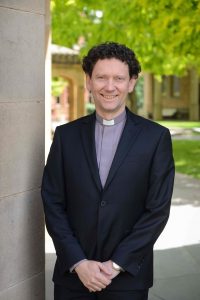 I am something of an avid film watcher. The recent restrictions during the holiday period meant that my wife and I probably watched more shows on Netflix than we normally might! One of the interesting plot devices that writers and directors often use is the concept of the main character losing everything (or having the threat of losing everything) and then getting it all back. The thing about losing something, and then having the chance to get it back, is that it creates an extraordinary sense of gratitude and an awareness of grace.
I am something of an avid film watcher. The recent restrictions during the holiday period meant that my wife and I probably watched more shows on Netflix than we normally might! One of the interesting plot devices that writers and directors often use is the concept of the main character losing everything (or having the threat of losing everything) and then getting it all back. The thing about losing something, and then having the chance to get it back, is that it creates an extraordinary sense of gratitude and an awareness of grace.
The story of the resurrection is all about that. The disciples lose Jesus in the most dramatic and violent fashion. In the ancient world, if people followed a teacher, especially someone as charismatic and energetic as Jesus, they were totally committed to him or her. If you became someone’s disciple in the ancient world, then they demanded your complete and utter loyalty. We don’t really have an equivalent today: perhaps an inspirational musical conductor comes close, or an extraordinary sporting coach comes close, but those connections are not as strong as the connection Jesus inspired from his followers.
So, when Jesus is arrested, and almost all the disciples run away and abandon him, and he is then crucified by the Roman Commander Pontius Pilate, it is disastrous! The disciples lose everything! This is not like getting your car or bicycle stolen – as annoying as that is – this is a total disaster; it’s absolute chaos and pain.
Good Friday is that time for the disciples. The Romans have crucified their leader and the disciples do what the vast majority of people do: they run away! Self-preservation rules. Jesus is gone and everything has been lost.
And yet … somehow, it’s not all lost. The new life of the resurrection is one of the beautiful mysteries of the Church, which is relevant in our day-to-day lives. When we think everything is lost, when we think there is nothing left, when we’ve absolutely hit rock bottom, God says, “Now, let’s start again.” Then, miraculously, everything is okay again with God and with life, even in the midst of pain.
There is a lovely message at the end of Matthew’s account of the resurrection (Matthew 28: 1–10). At the tomb the two Marys encounter an angel of God. In the tradition, angels are messengers from God; they most often appear in dreams, but this encounter is far more dramatic. Here the message is delivered face-to-face; and the message is to tell the other disciples to return to Galilee, where is all began! There they will encounter the risen Jesus. Then the two Marys have an even more overwhelming mystical experience, they encounter the risen Jesus themselves, but the message is the same, “Tell my brothers to go to Galilee; there they will see me.”
So, the two Marys, the first witnesses to the resurrection in Matthew’s Gospel, pass the message on. In his commentary on Matthew’s Gospel, my friend David Mackay writes that the message to return to Galilee is powerful, because Galilee is where it all began. Building on his idea, it’s as if Jesus is saying, “Go back to where you first heard the good news, to the time and the place when your enthusiasm was fresh and you saw the world with bright eyes, when the world was full of possibilities and everything was new and exciting. Go back there and there you will find me.”
The Reverend Dr Theo McCall
School Chaplain
